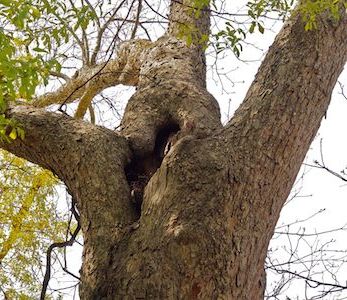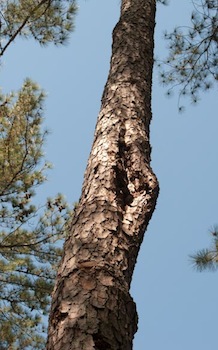Maybe, depending on how deep it goes and where it is. Tree cavities are caused by decay; and where there is decay, the tree has lost some of its strength
- If the cavity is located at the bottom of the trunk, the tree may be at risk of falling over.
- If it is a large cavity or area of decay on the trunk, the tree could break in the wind. This is particularly true for pine trees.
- If the cavity is located at a connection between the trunk and a large branch, the branch could get ripped off the tree in a severe wind storm or when it is carrying extra weight, such as from ice, nuts, or excessive rainfall.
Some cavities are small enough that they can be left alone. They may even be a nesting site for birds! If we see a cavity that causes us concern during our inspection of a tree, we may suggest a Resistograph test to measure how much decay and loss of strength are there. This test will tell us whether or not to recommend removal.


